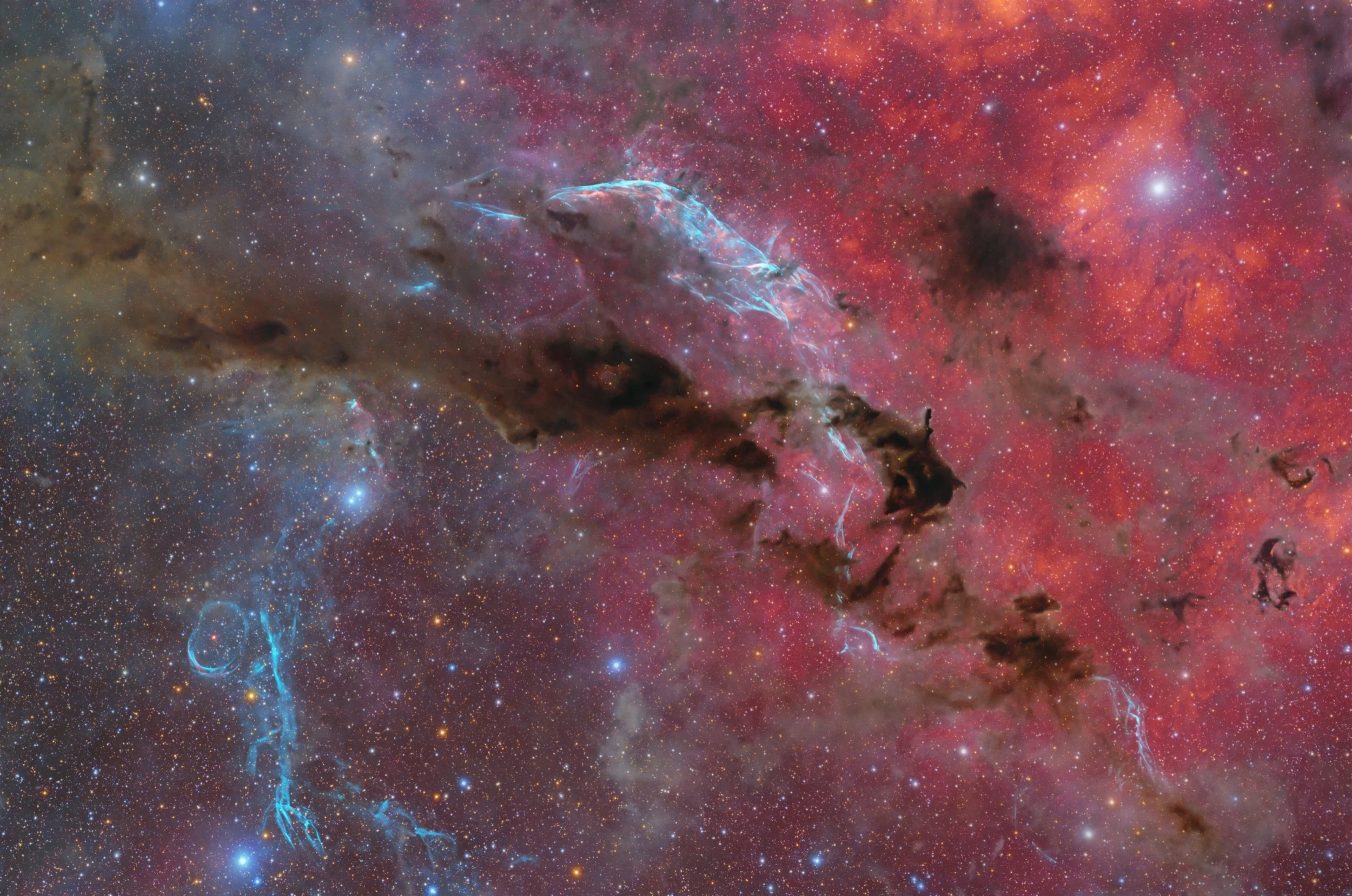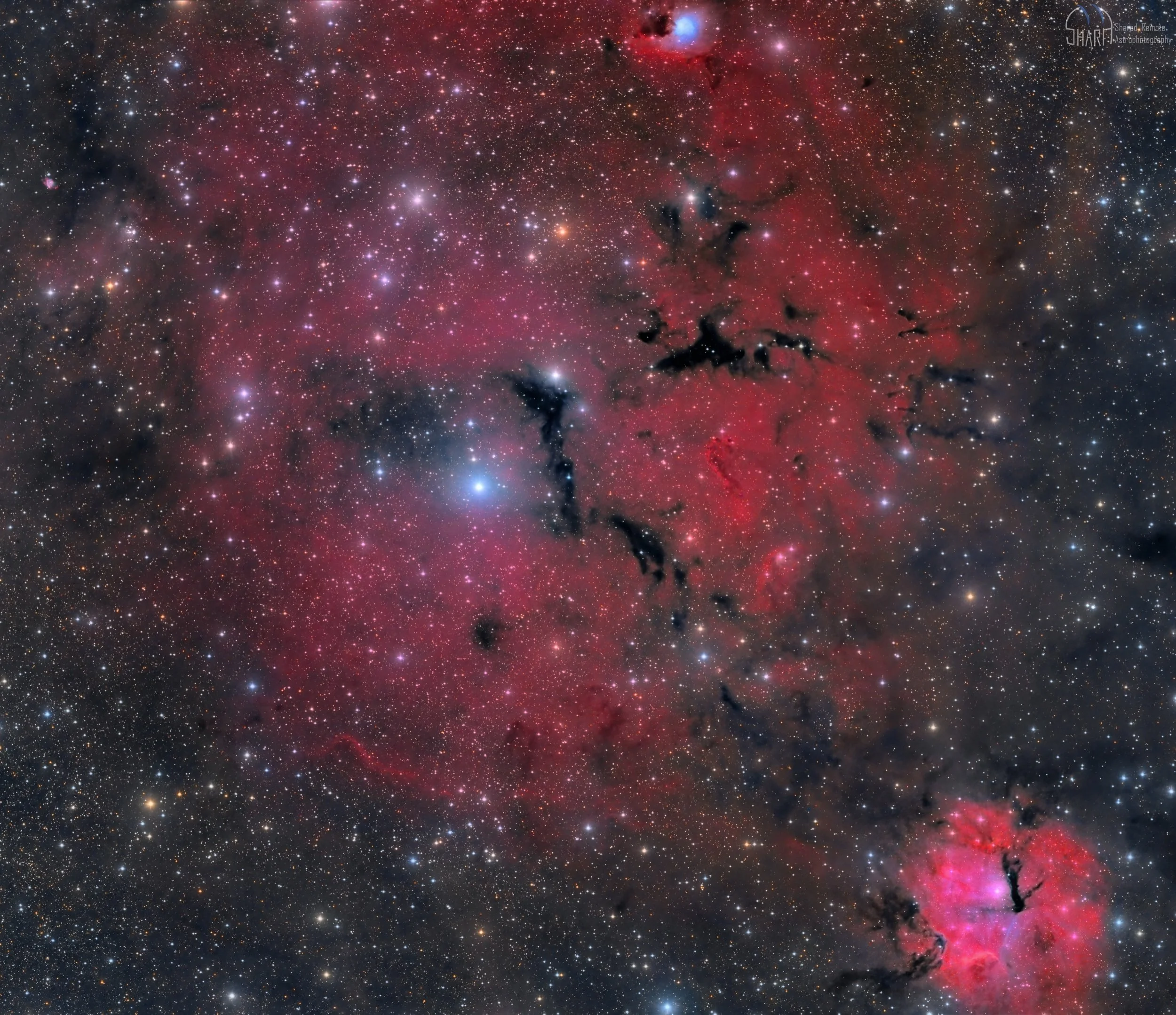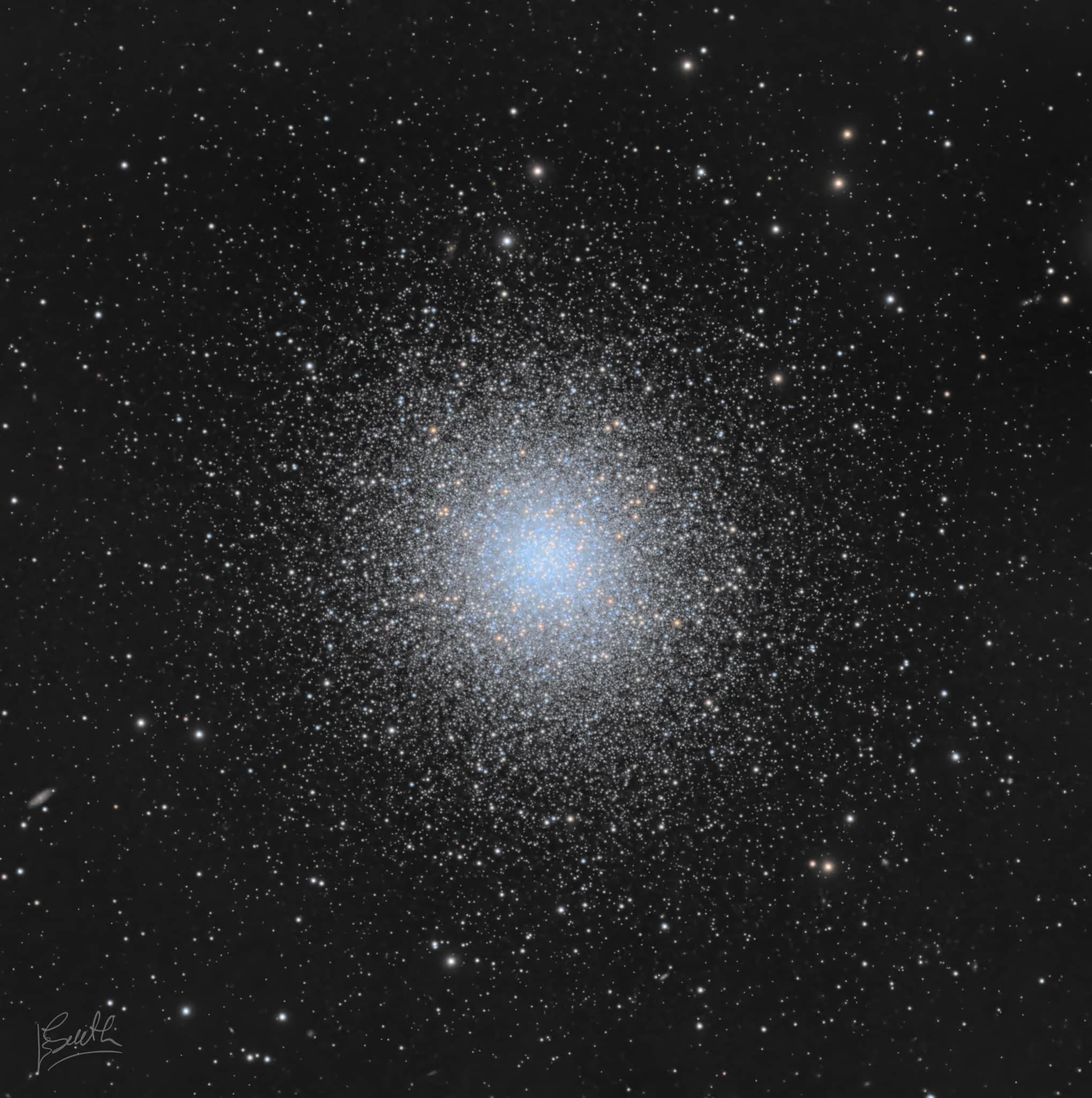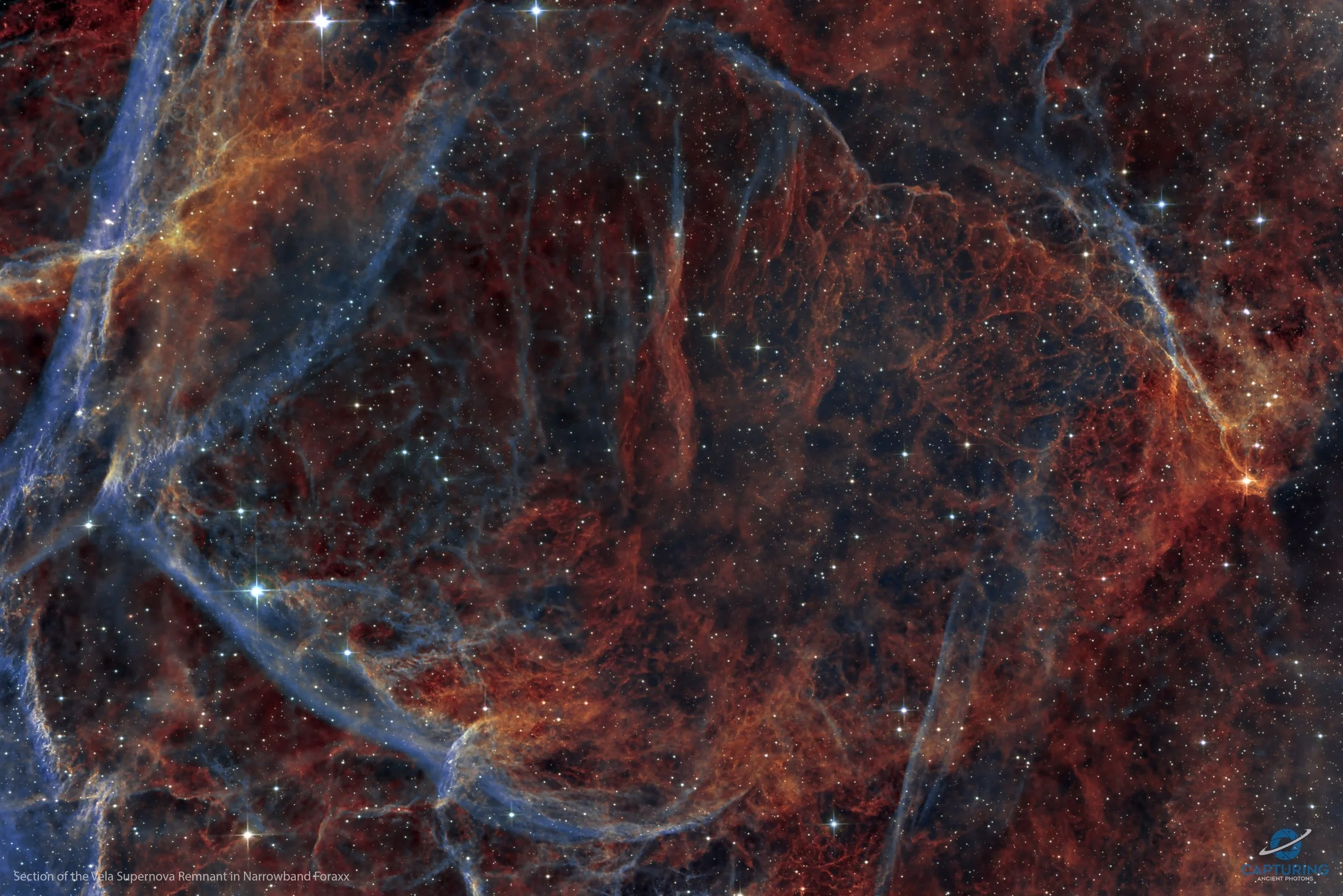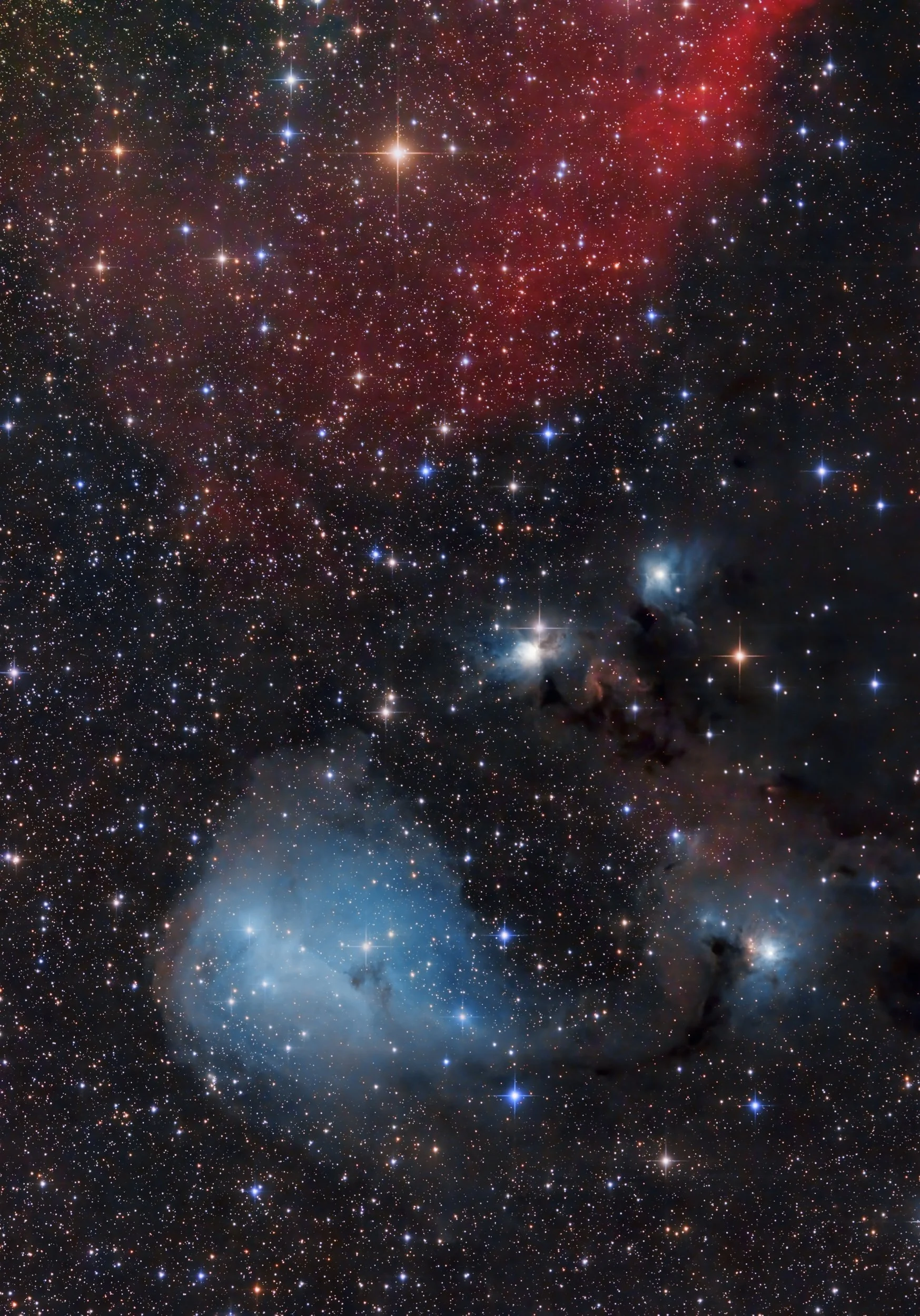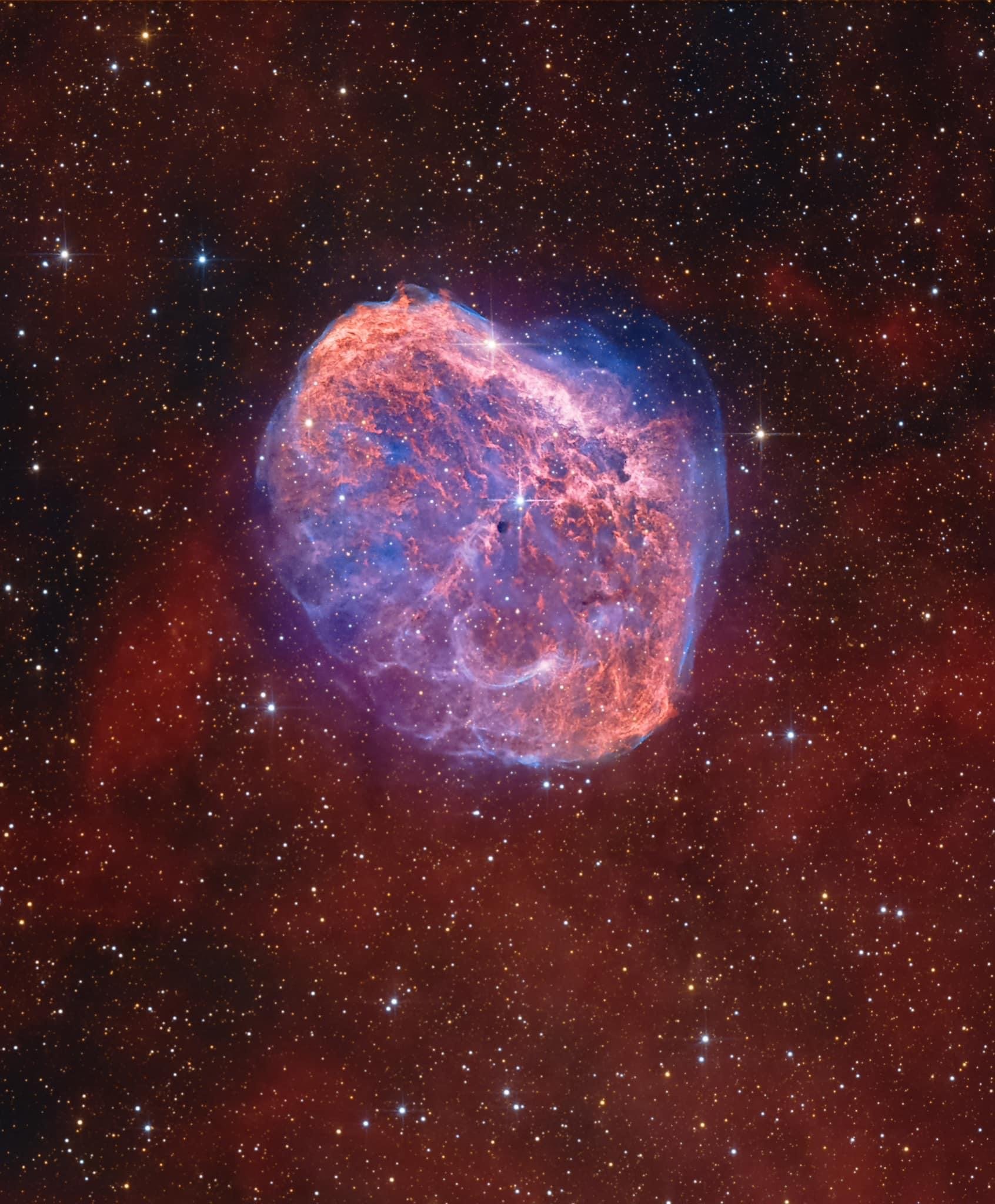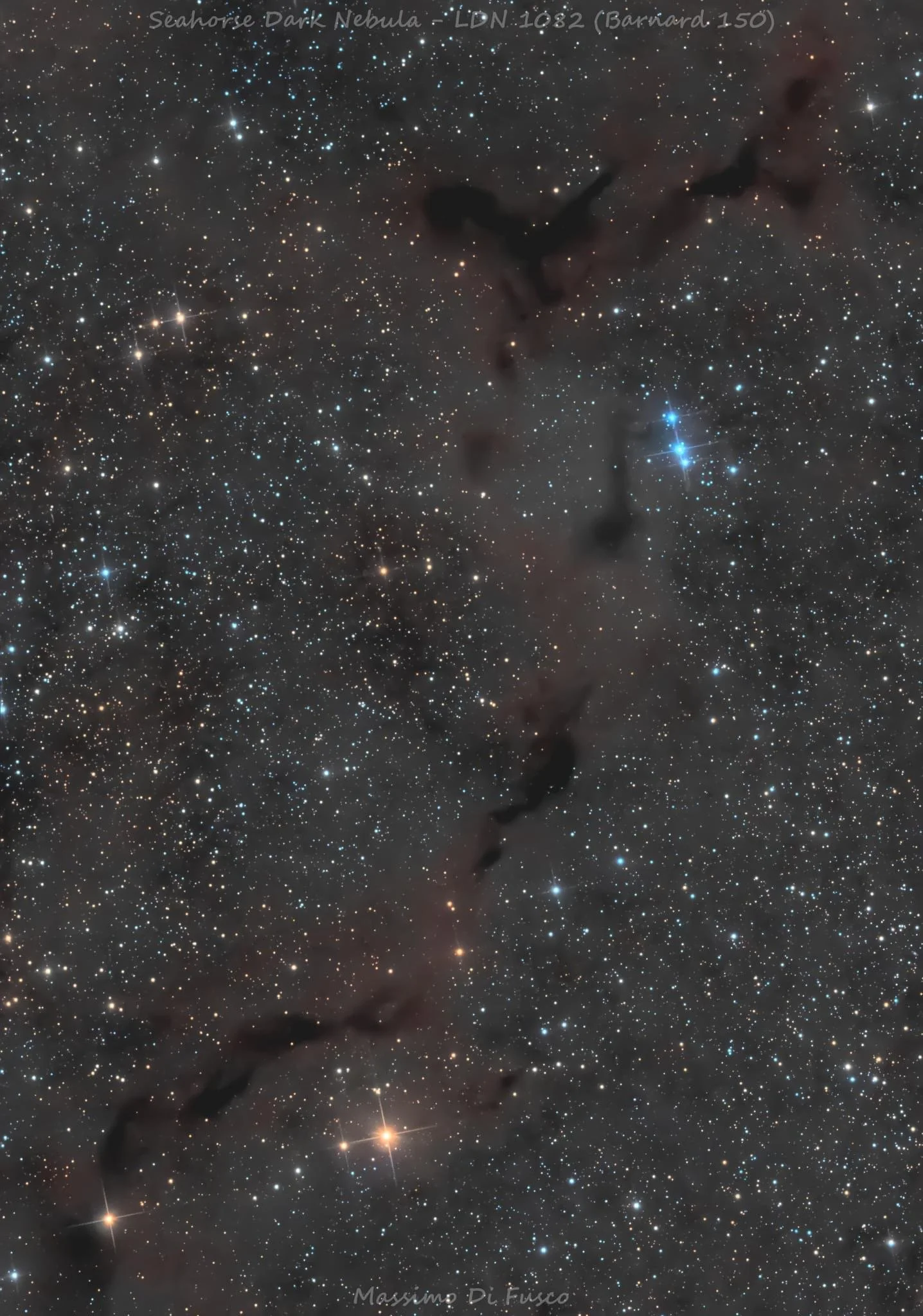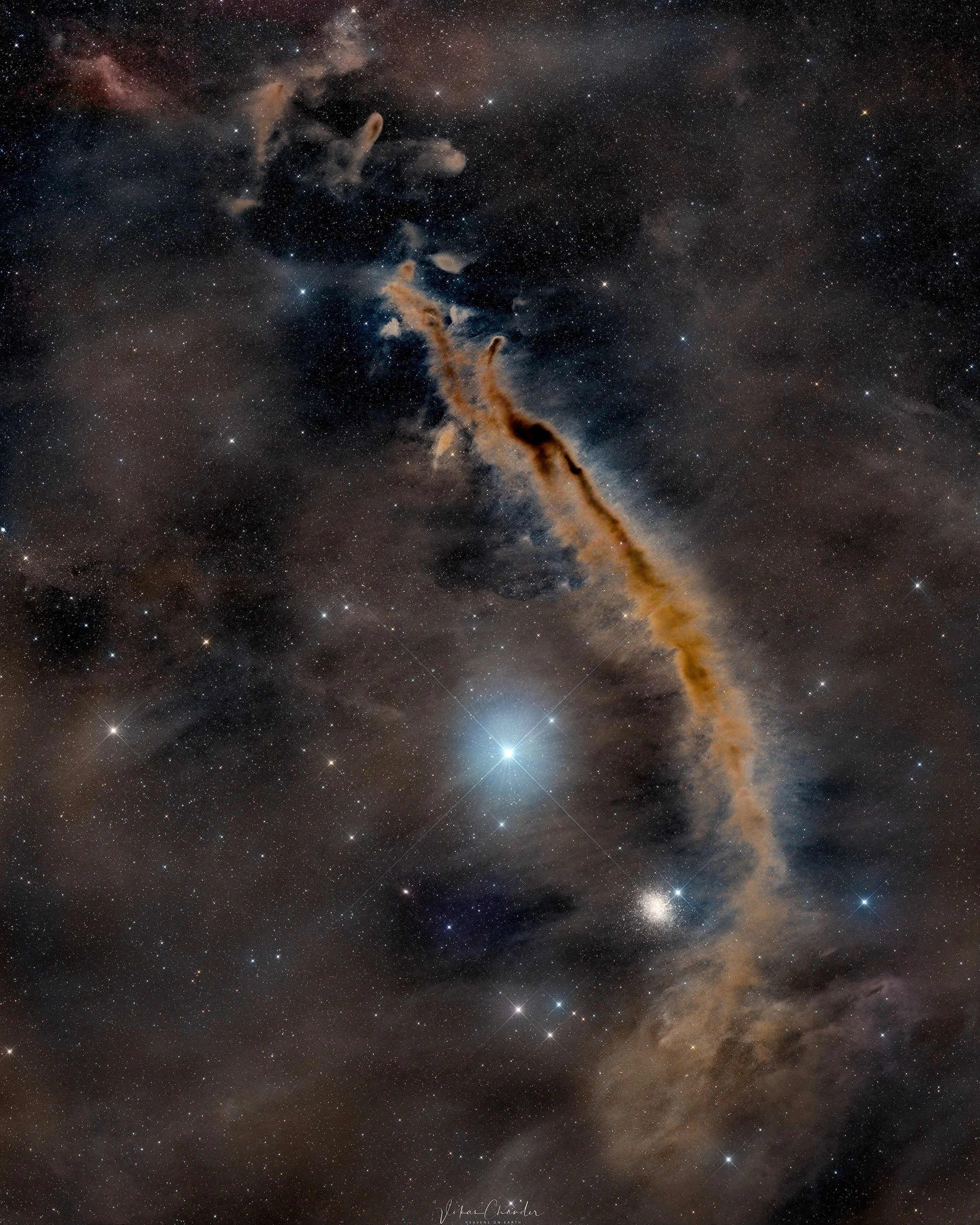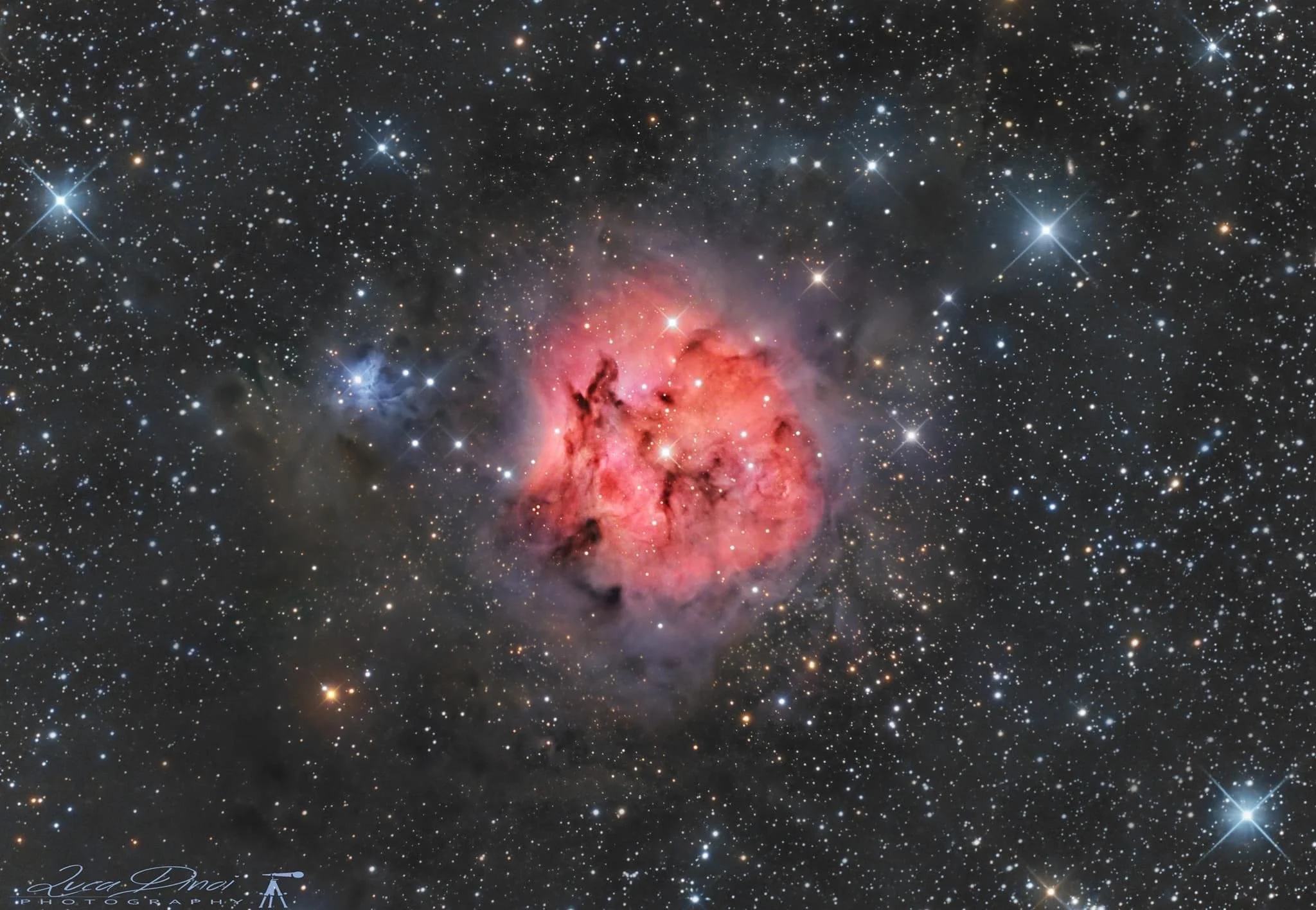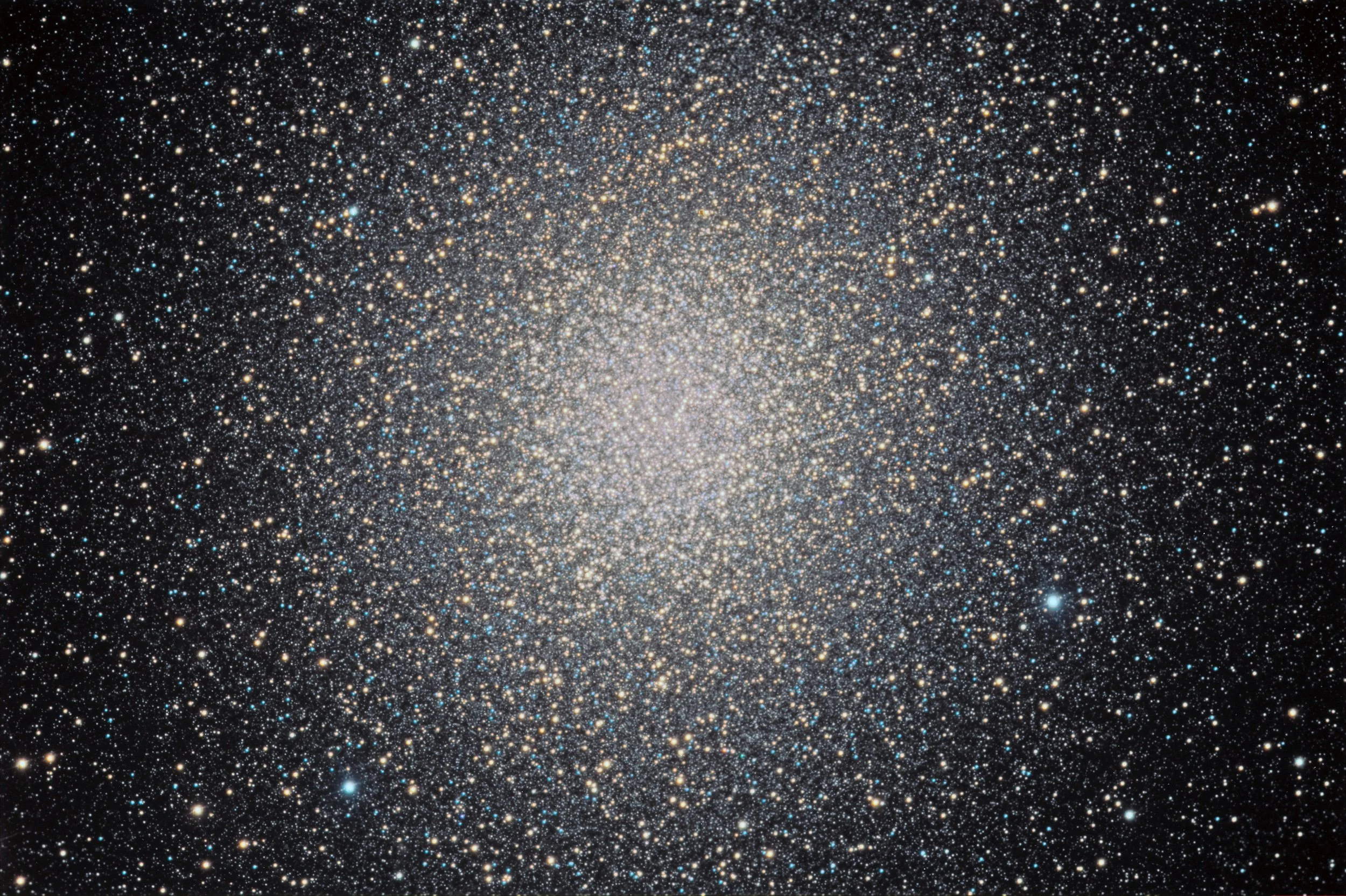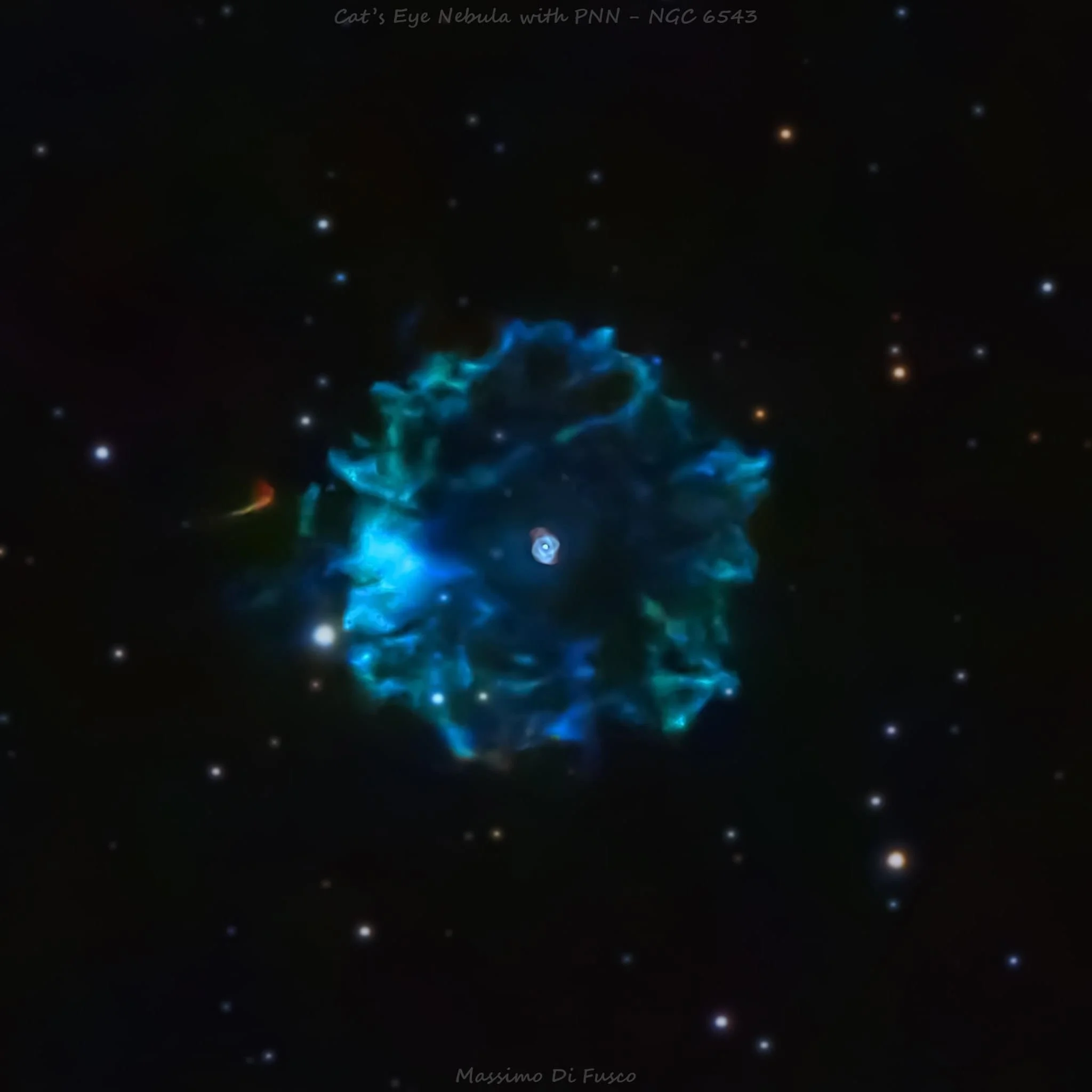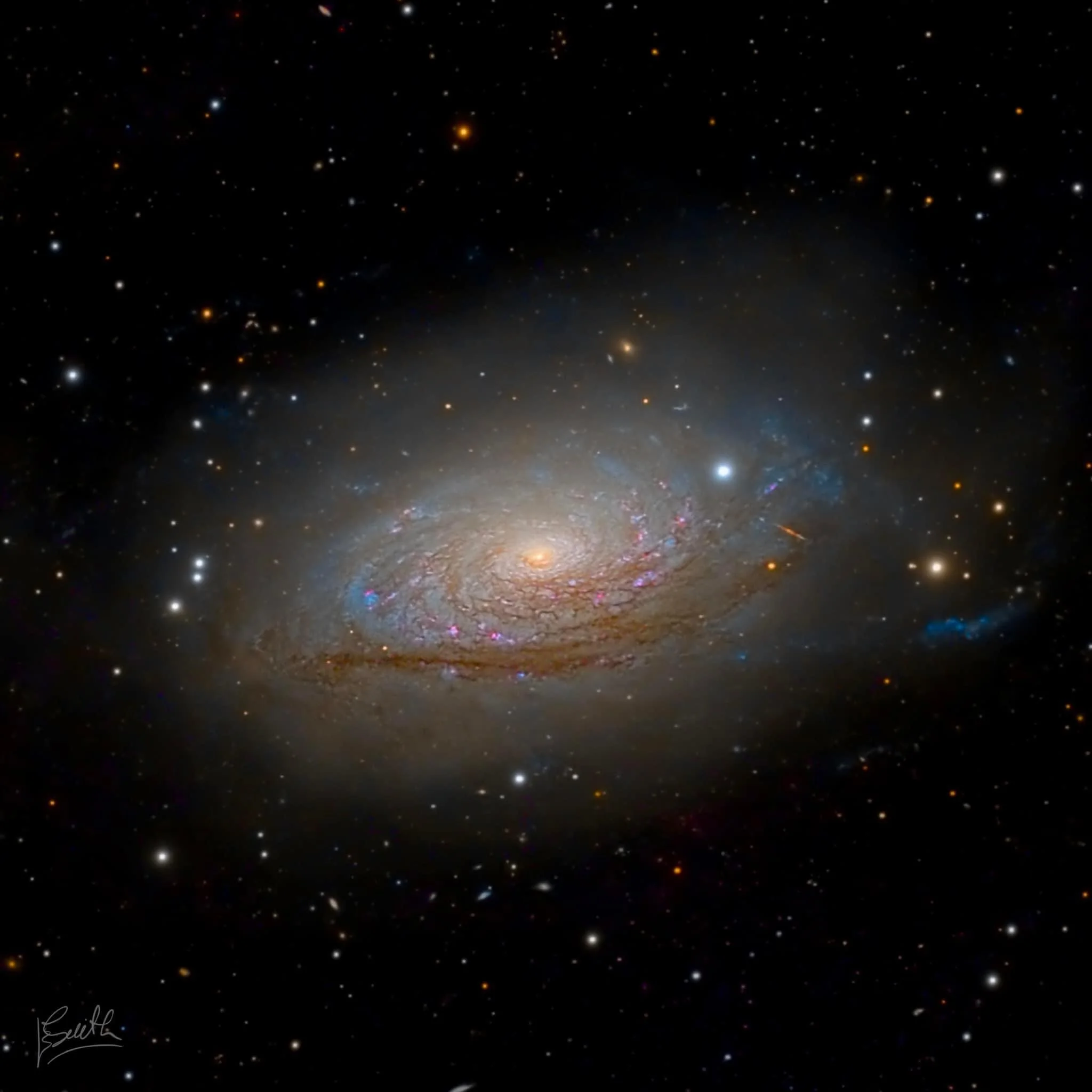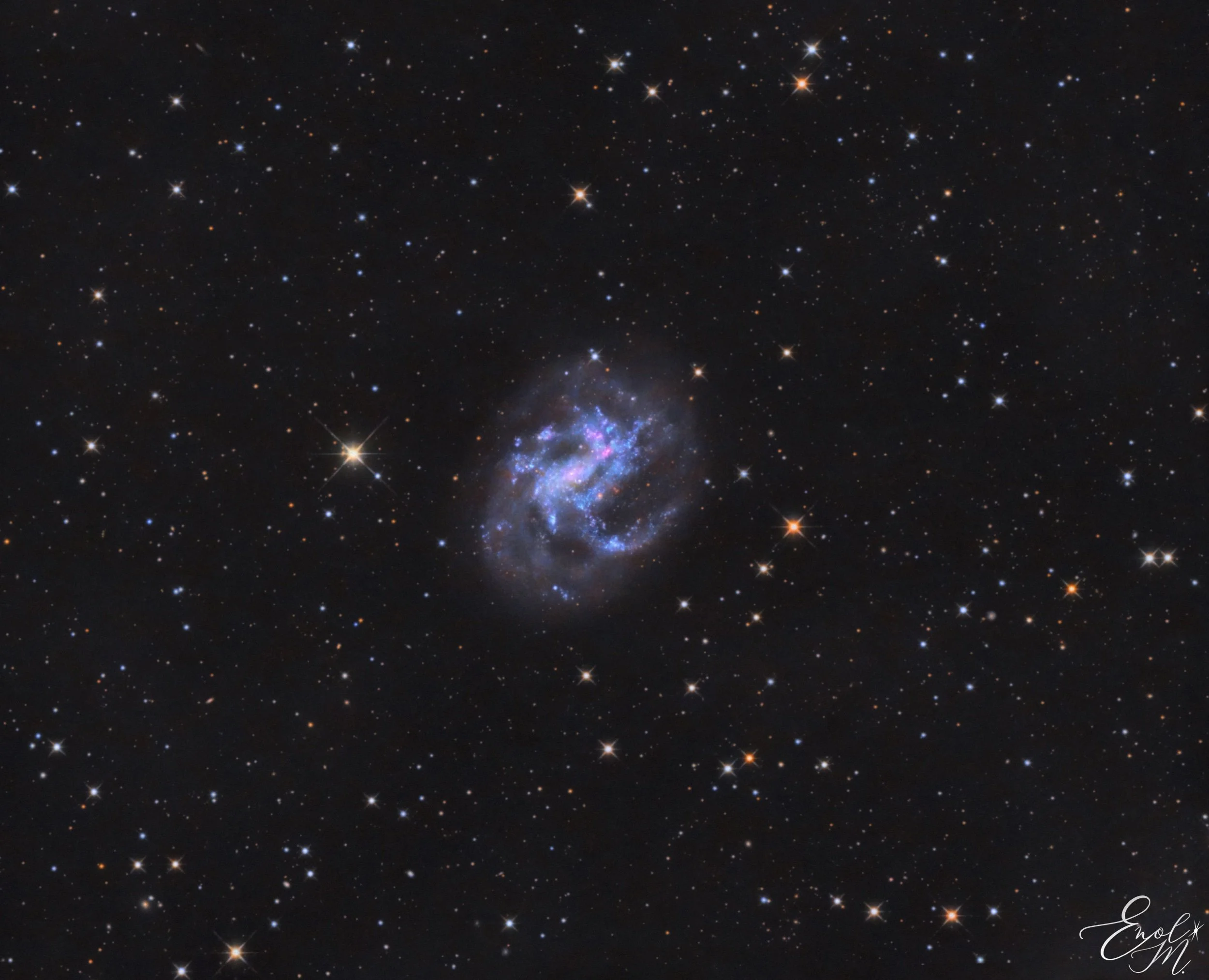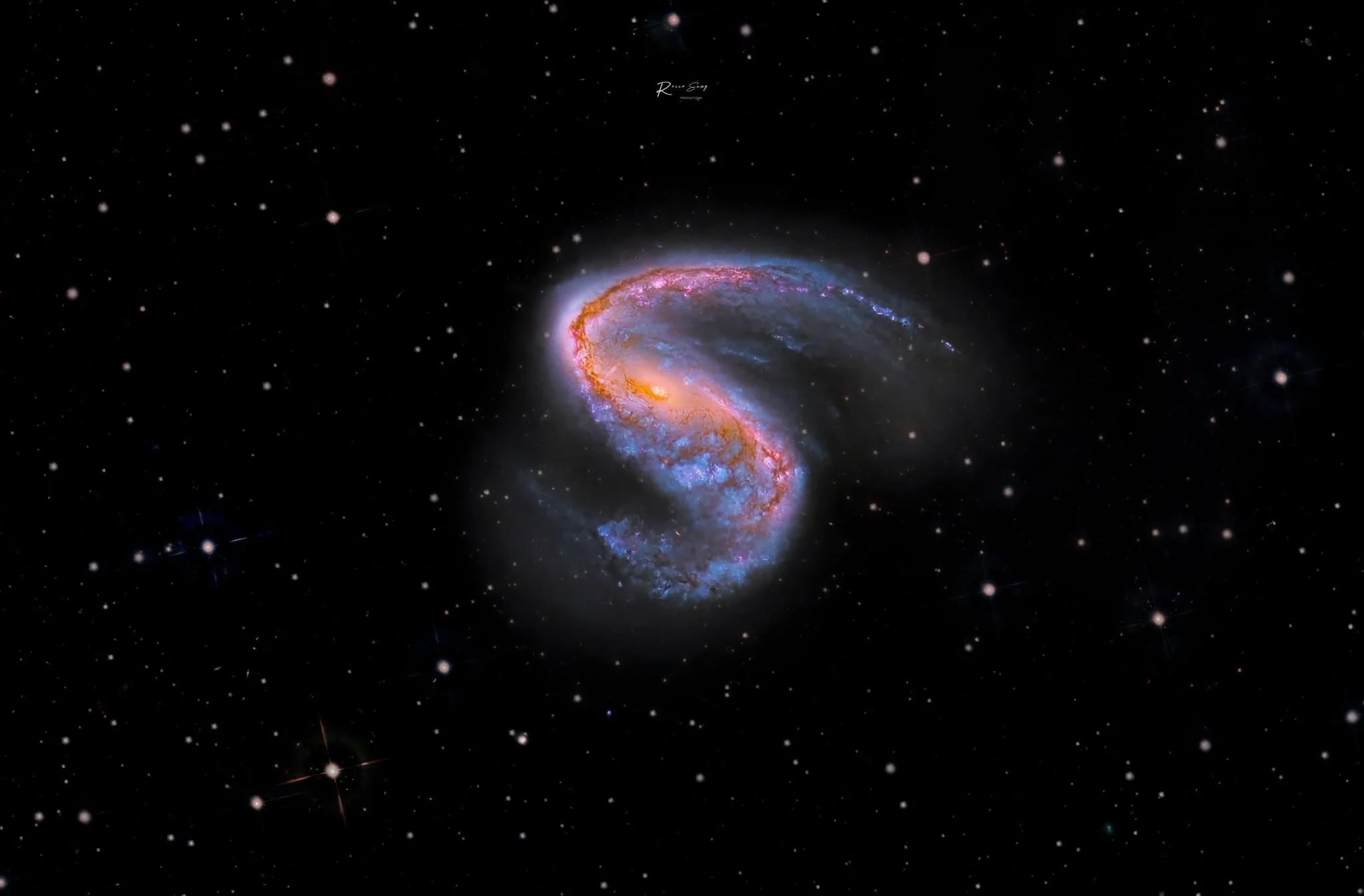
AAPOD2 Image Archives
Thor's Lightning (SNR G150.3+4.5) with a new discovery MarSai Object 1
Image Description and Details : We have photographed the LDN 1400 object that hides the SNR G150.3+4.5, aka "Thor's Lightning."
A collaboration on data acquisition allowed us to highlight the SNR signal but also to unveil an OIII shell around the star "CI Camelopardalis".
The StDr team, which supported us on this project, analyzed our data and helped us to register this discovery, allowing us to open the Martino-Sainty Object (MarSai O) catalog
MarSai O 1 was named the "Angelo's Nebula", in homage to my father.
- Material and exifs from Nico:
RGB exifs: 269x300s
Alpha exifs : 83x600s
Takahashi FSQ85-EDX scope and ZWO ASI2400MC camera and Optolong L-Ultimate filter for the Hydrogen Alpha signal.
Sky-Watcher EQ6-R Pro mount driven by AsiAir Plus
- Yann's material and exifs :
Exifs Oiii : 60x600s
Takahashi FSQ106-EDX4 scope with reducer, and ZWO ASI2600MM camera and Antlia 3Nm 36mm filter
Sky-Watcher EQ6-R Pro mount driven via NINA.
Total integration 46h15
Pre-processing was done with Siril and post-processing with PixInsight and Photoshop.
Copyright: Nicolas MARTINO
Yann SAINTY
Team StDr
Gum 14/15 and the small planetary nebula He 2-11
Image Description and Details : Also the fourth stage of the ShaRA project, with which we occasionally go on a remote trip to the southern hemisphere to film some marvel of that marvelous sky, has recently concluded. ShaRA#4 was characterized by the multitude of shots taken but in this post I show you only the first part that featured the extended nebulae Gum 14 and Gum 15 and the small planetary nebula He 2-11, of which we made the first ever amateur shot and which we renamed the Spin Nebula.
Gum 14/15 are two little photographed nebulae in the constellation of Vela and apparently linked to each other. Gum 14, the largest, is an emission nebula excited by a class O blue supergiant and prospectively adjacent to a complex of reflection nebulae whose most important is NGC 2626. Gum 15 is another emission nebula which, together with Gum 14 belongs to the Vela Molecular Ridge: a mega molecular complex full of young and hot stars, which thanks to their radiation, becomes visible to our telescopes.
He 2-11 is a planetary nebula about 2300 light years away, with the rare peculiarity that its nucleus is characterized by a variable binary system. He 2-11 has a structure characterized by a uniform central core of OIII and two filamentous outer protuberances of low ionization H-alpha.
Copyright: Massimo Di Fusco (Team ShaRA
NGC 3572 and the Southern Tadpoles
Image Description and Details : I have taken this image in Ma5 2023, with my own equipment from the backyard of my house, in Posadas city, Argentina.
The data of the equipment used the details of the image are as follows:
Telescope: Skywatcher Esprit 150 ED Super APO Triplet
Cameras: QHYCCD 16200A
Mount: SkyWatcher EQ8-RH Pro
Guiding telescopes: SW Evoguider 50/250
Guiding camera: QHY5l II
Filters for Stars: Baader R - G - B
Filters for Nebula: Chroma OIII 3 nm - Antlia Ha 3 nm - Antlia SII 3 nm
Software: NINA - PHD2 - Pixinsight 1.8
Integration time: 15 h 15 min 30 sec
Copyright: Christian Hilbert
M 13 Hercules Globular Cluster
M 13 is 145 light-years in diameter and composed of between 300,000, to more than half a million gravitationally bound stars in the constellation of Hercules.
It’s a spectacular star cluster to see in a telescope with its super bright core of hot blue stars.
Imaged over 2 nights in May 2023 from my home in Gérgal, Spain., taken during almost a full Moon to test a new mount recently purchased.
Technical summary:
Captured: 03,04-05-2023
Imaging Sessions: 2
Location: Gérgal, Andalucía, Spain
Bortle Class: 4
Total Integration: 6h 50m
Filters:
Red 48x 91s 1h 31m BIN 2 Gain 100 0C SQM 19.5
Green 73x 60s 1h 13m BIN 2 Gain 100 0C SQM 19.5
Blue 78x 60s 1h 18m BIN 2 Gain 100 0C SQM 19.5
UV/IR 168x 60s 2h 48m BIN 2 Gain 100 0C SQM 19.5
Pixel Scale: 0.27 arcsec/pixel
Telescope: Celestron C11 Edge HD f/10 2800mm
Image Camera: ZWO ASI 6200MM Pro
Guiding: Omegon 60mm 240mm, ASI 183MC Pro
Filters: Astronomik R, G, B, UV/IR
Mount: iOptron CEM120 EC
Computer: Minix NUC
Capture software: NINA, PHD2
Editing software: PixInsight, Adobe Lightroom
Copyright: Eric Smith
Section of the Vela SNR in Narrowband Foraxx
Image Description and Details : A reprocess of the Southern Pinwheel Galaxy (M83,NGC5236) a barred spiral galaxy in the constellation borders of Centaurus and Hydra and approximately 15 million light years away.
93 x 180s subs shot @-10C taken over 2 nights using LRGB filters for an integration time of 4.5 hours.
For a higher resolution visit: https://www.astrobin.com/tykwqt/B/
Skywatcher 10" f4 Newtonian 250P
Skywatcher F4 Aplanatic Coma Corrector
Skywatcher NEQ6 Pro Hypertuned by Astronomy Academy Perth
ZWO ASI183MM Pro Cooled Camera
Primaluce Sesto Senso2 Electronic Focuser
ZWO Off Axis Guider
ZWO ASI290MM Mini Guide Camera
ZWO Electronic Filter Wheel
Antlia Pro 36mm unmounted filters
Rollon rolloff modified shed observatory
Bortle 5
Data acquisition software: NINA Astronomy Software
Processing software: PixInsight and Photoshop CC
Copyright: Capturing Ancient Photons
Pythagoras
Image Description and Details : Pythagoras is a prominent impact crater located near the northwestern limb of the Moon.
Pythagoras has a diameter of 130 km and its peak ascends 1.5 km above from the crater floor.
Celestron C9.25 XLT
ZWO ASI178MM
Tecnosky IR Pass 865nm filter
Acquisition, stacking and processing: Sharpcap/Autostakkert/Registax/Photoshop
Copyright: Antonio Grizzuti
Blue Whale Nebula (IC447, IC2169)
Image Description and Details : Area of beutiful reflection nebula, IC447
Looks like jewel box of winter milkey way.
Telescope: Skywatcher Quattro 150p
Coma Corrector: TSGPU
Mount: iOptron CEM70
Guide: Askar M54 OAG & ZWO asi174mm mini
Camera: ZWO asi2600mc pro & Touptek ATR3 CMOS 26000 KMA
Filter: Optolong L-Pro & Antlia V-Pro Luminance
Exposure:
RGB - 180" x 129
L - 60" x 156
Total 9h 3m
Copyright: SeulWoo Kim
M17 Omega Nebula
Image Description and Details : M17 Omega Nebula
The Omega Nebula (also known as the Swan Nebula, Horseshoe Nebula, Lobster Nebula or with the catalog codes M 17 and NGC 6618) is an emission nebula, discovered by de Chéseaux in 1746 and rediscovered by Charles Messier in 1764, located in the constellation Sagittarius.
Thanks to its luminosity, the Omega Nebula is quite easy to locate: it is located 2° southeast of the star γ Scuti. it can be identified quite easily even with 10x50 binoculars or even smaller, if the sky is dark and clear: in these instruments it appears as an elongated spot; through a 114 mm instrument, equipped with a UHC filter, it reveals a good part of its nuances and plays of light. From 200mm onwards the vision is exceptional, and it is advisable to take a long exposure photo to capture the rosy colour.
Constellation: Sagittarius
Right Ascension :18h 20m 26s
Declination : -16° 10′ 36″
Distance : about 6000 a.l.
Apparent magnitude: 6.0
This magnificent nebula was taken by my friend Gianni Lacroce. There are just under two hours of shots taken with a zwo ASI 2600 MC camera, a camera given to Gianni by a shopkeeper near Rome to test it. The owner had the doubt of a malfunction (later revealed not to be present). Talking about his performance, I asked him if I could elaborate these few shots and he kindly granted me the integration master.
Data:
Telescope: Newton 200/800
ZWO Astronomy Cameras asi 2600MC
Optolong Astronomy Filter L-ULTIMATE 2"
Mount: EQ6r
Location: Rome (Cinecittà)
21 lights of 300" total exp 1h45'
Flat, dark ok
Copyright: Mirko Tondinelli _ Gianni LaCroce
The Crescent nebula
Image description:
H-alfa data with RGB stars.
About 6h worth of data
Asi294mc
Azeq6 pro
Skywatcher 200/1000
L-extreme filter
Baader UV IR cut
Copyright: Cristiano Gualco
Ldn1082
LDN 1082 or Barnard 150, also known as Seahorse Nebula because of its striking appearance, is an extended, elongated dark molecular cloud of dust in Cepheus constellation, so thick, that it absorbs all the light that comes from the stars behind it. This molecular cloud is part of our Milky Way galaxy, one of the 182 objects cataloged by astronomer Edward E. Barnard and it lies at about 1200 Llight -years away. Cloud location on the Milky Way's plane, makes it stand out on the background completely filled with colorful stars of any age and size.
This nebula is about 1 degree in size, width of two Moons. What is also interesting about this cloud, as it have 3 highly dense dust cores, which actually is a star formation regions. They were cataloged by Lynds and named LDN 1082 A, B and C.
Because the molecular cloud is only illuminated from behind by starlight, it is a major challenge for astrophotographers to process the dark dust on a dark background. To make things easier, nebulae of this type require very dark skies, so I was skeptical about the success of the photo from a polluted city sky (Bortle 7, SQM 19). The result surprised me quite a bit, also considering that this nebula is still low in this period.
Konus 200/1000 @960mm, f/4.8
Qhy168c @-20 °C
Sky-Watcher Eq6r Pro mount
SvBony CLS filter 379x180"
N.I.N.A., DSS, APP, PixInsight, PS
Copyright: Massimo Di Fusco
The Millipede
Image Description and Details : Out of all the possible types of targets one can image in deep space, dark nebulae intrigue me the most. They invoke feelings of mystique and dread, often ominous, and draws the mind’s eye towards what may lie in those dusty depths and beyond. Also known as absorption nebulae, they appear so because of sub-micrometre-sized dust particles, coated with frozen carbon monoxide and nitrogen, which effectively absorb and block the passage of light at visible wavelengths in space. Some parts of these nebulae are so dense that they completely block the light emanating from stars and nebulae behind them, creating what appears to the eye as huge voids of space. Their shapes are very irregular, having no clearly defined outer boundaries and sometimes take on convoluted serpentine shapes, as seen in this image
In the obscure southern constellation of Muska lies a long dust cloud, spanning more than 6 degrees often referred to as the Dark Doodad. A search amongst various dictionaries refer to a Doodad as an ornament or electronic part whose name is forgotten. To my mind’s eye it looks more like a millipede floating in space and I prefer to call it such. Also seen is the bright blue star y Mus and the star cluster NGC 4372.
I imaged this from the dark skies of Chile, with my fast Takahashi E160ed scope, which is located in a remote observatory, DeepSkyChile. This combination is best suited to bring out all the details of dark nebulae. To fit the entire form of this particular dark nebula, which spans over 6 degrees of the night sky I decided to do a 2 panel mosaic. Dark nebulae are notorious to image with any great semblance of detail as they are very faint and to mitigate this, each panel was set up for 25 hours of data acquisition, resulting in a total integration of 50 hours. I have also upgraded my filters to the Astronomik Deep Sky series which controls the halos of the stars very well, blue being particularly notorious in producing large halos around bright stars on fast scopes. Pixinsight offers some great tools for stitching mosaics and I made use of its capabilities to process the image to its current state, applying some final spit and polish in Photoshop.
Telescope: Takahashi E160ed F3.3
Camera: Zwo 6200mmpro
Mount: Software Bisque Paramount MX+
Observatory : Deep Sky Chile
L = 120 x 5 mins per panel
R= 60 x 5mins per panel
G= 60 x 5 mins per panel
B= 60 x 5 mins per panel
Total integration = 50hrs total
Software = Voyager, Pixinsight, photoshop
Copyright: vikas chander
IC 5146 Cocoon Nebula
Newton Orion 254/1000 astrograph
Camera ASI Zwo 294 pro
Skywatcher Eq6 pro mount
79 x 300s gain 220 -10° L-eNhance filter
59 x 300s gain 122 -10° L-pro filter
Software: SGP, Nina, Pixinsight and Photoshop
Copyright: Luca Dinoi
Omega Centauri
Image Description and Details : Taken with my 36.8 cm F9 Ritchey Chretien and STXL6303 CCD camera from my backyard observatory in Canberra Australia. This is a standard LRGB image with luminance = red = green = blue = 50 minutes. Processing in MaximDL, Pixinsight and Adobe photoshop CC
Copyright: Steve Crouch
The Colorful Clouds of Scorpius
Just outside the milkyway core is (in my opinion) the most beautiful area of the sky. These two objects, known as Rho Ophiuchus and the blue horsehead, exhibit most types of nebula in the sky; blue and yellow reflection, red emissions, and dark dusty nebulae.
This is an image I’ve wanted to shoot for many years, but just finally got around to doing it justice in my eyes.
Shot with my travel rig; @rokinon 135mm f/2.8, @zwoasi 2600mc and AM5. 2 panel mosaic, each 20x300” for just over 3 hours of total exposure.
©️ @goodastronomy
Ngc6543
During this time a bit of astrophotography stall, waiting to start photographing the summer nebulaes, I wanted to try out an experiment using the small planetary chamber Asi224 to capture the nucleus of the Cat's Eye nebula (NGC 6543). I basically used the same technique that is used for planetary footage, aka the lucky imaging technique, mounting a Barlow 2x lens to bring the focal point of my telescope to 2000mm.
Convinced myself to try this shot/feat with a simple Newton 200/1000 after meeting someone crazier than me (guess who? ) that taught me to dare to push my own setup to the limit. So, I got the center of NGC 6543 and started for 2 nights in a row (plus a test night) 6/7 hours of video without driving (blessed Eq6r!!! ). From these videos, then, I extracted 50% of the best frames that were aligned and summed up to get the final picture of the kernel which was subsequently mounted along with the Cat's Eye nebula long exposure photo I had taken earlier in the year. Another novelty for me in this experiment was the use of GIMP to join the two photos together
The Cat's Eye Nebula (also known as NGC 6543 or Caldwell 6) is a planetary nebula in the northern Dragon constellation, discovered by William Herschel on February 15, 1786. It was the first planetary nebula whose spectrum was studied by British amateur astronomer William Huggins, proving that planetary nebuluses were gassy in nature and not stellar. Structurally, the object was studied with high-resolution images obtained from the Hubble Space Telescope that reveal nodes, jets, bubbles and complex arcs illuminated from the core of the central heating planetary nebula (PNN).
For the outer nebula:
Konus 200/1000 @960mm, f/4.8
Qhyccd Qhy168c @-20 °C
Sky-Watcher Eq6r Pro mount
Optolong L_Ultimate filter 265x300"
N.I.N.A., APP, PixInsight, PS
To the core:
Konus 200/1000 @2000mm, f/10
ZWO Asi224mc (gain 550) with 2x Barlow lens
Svbony UV/IR-cut filter 1766x1"
Svbony UV/IR-cut filter 11460x0.75"
Svbony UV/IR-cut filter 14025x0.5"
Sharpcap 3.2, pipp, auto beautiful! 3, PixInsight, GIMP, PS
Copyright: Massimo Fusco
Aurora
Image Description: Last night surprised me a million times. What was that even...?
I was sitting quietly outside my house on this ultra warm evening at the telescope when the guiding gave me problems and EAF started driving like possessed... I said a few indecent words, moved from the chair to get rid of "this state" and looked at the sky.
I didn't do it well, because I started rubbing my eyes with surprise, after wk... no trace, just a tide of euphoria, a run for my camera that I haven't yet figured out from the Baltic sand, as well as the tripod
... and a long one into the field bit muddy but it didn't matter.
I even shouted at the Young one to get it together and saw it with his own eyes
Waves spilled across the northern horizon, slightly green, and above my head I looked every moment at a growing pillar, entering the zenith.
51°... N, 21°... E
How is this even possible..?! I was not interested in it at all.
Thought I would give a call to those who would like to see it in person.
I stood in this mud, between the green grain and the greenish sky, I called, I caught my breath, I called again, I turned the blinker on between ... and I absorbed all of myself.
The dawn has taken many forms... From the poles, to the waves, to the bubbles, the souls that came and went - from the west side of the sky, to the north, to the east... Unbelievable.
I couldn't sleep in a very long time.. until three with minutes I trampled the path around the house...
I took some pictures, although they didn't need much, I assembled panoramas of which the shorter one is ok (5 horizontal frames), but the longer one (10 vertical frames) strongly bent by PS, plus stratrails with a free bolid (? ), plus a couple of individual frames.
Technically: Canon 7Dmk2 + Canon 10-22 mm, on a tripod, in the north of Puława and Nitrogen Plants, in the northwest Electronics Kozienice.
Copyright: Kamila Mazurkiewicz Osiak
M 63 Sunflower Galaxy
Image Description: M63 lies at a distance of 27 million light years from our own Galaxy in the constellation of Canes Venatici. Its size is approximately 99,000 x 57, 000 light years.
To the lower left of the Galaxy there are horizontal dust lanes presumed to be not part of the disk, but lay in front of the Galaxy.
The spiral pattern is mostly fragmented indicating possible supernovas exploding in star formation regions.
Imaged over 5 nights using various combinations of angular rotation and guiding. The next time I image this Galaxy I will use a much longer focal length as this image is a tight crop of the original field of view.
Technical summary:
Captured: 14,15,19,20,21-03-2023
Imaging Sessions: 5
Location: Gérgal, Andalucía, Spain
Bortle Class: 4
Total Integration: 24h 55m
Filters:
Red 42x 300s 3h 00m BIN 2 Gain 100 -5C SQM 20.6
Green 43x 300s 3h 35m BIN 2 Gain 100 -5C SQM 20.5
Blue 43x 300s 3h 35m BIN 2 Gain 100 -5C SQM 20.6
UV/IR 171x 300s 14h 15m BIN 2 Gain 100 -5C SQM 20.6
Pixel Scale: 0.8 arcsec/pixel
Telescope: Celestron C11 Edge HD x0.7 f/7 @ 1960mm fl
Image Camera: ZWO ASI 6200MM Pro
Guiding: ZWO OAG L with ZWO ASI 192MM Mini
Filters: Astronomik R, G, B, UV/IR
Mount: Skywatcher EQ6-R Pro
Computer: Minix NUC
Capture software: NINA, PHD2
Processing Software: PixInsight, Adobe Lightroom
Copyright: Eric Smith
Crater Lake
"Crater Lake"
Crater Lake National Park has been on my wish list for a big Milky Way panorama ever since my first visit several years ago.
5 years and several attempts later, I finally found perfect conditions during my visit in late June 2022. I was surprised that a thick snow cover was still present. It kept me from reaching my planned shooting location, but it nicely framed the crater rim at my alternate spot.
EXIF
Canon EOS R, astro-modified
Tamron 15-30mm f/2.8 @ 15mm
IDAS NBZ-Filter
iOptron SkyTracker Pro
Sky:
Panorama of 7 panels, each a stack of 6x 90s @ ISO1600, unfiltered & 3x 180s @ ISO6400, filtered
Foreground:
Panorama of 7 panels, each 15s @ ISO400 during twilight
Copyright: Ralf Rohner

